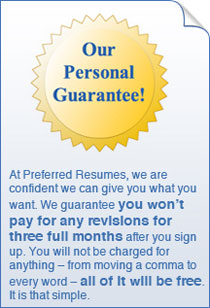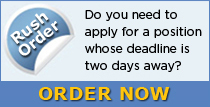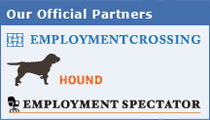The Structure of a Basic Cover Letter
|
|
Accordingly, sample cover letters are available on the internet, which can greatly simplify the process, should you be able to use a standardized format. And it is always helpful to get someone to take a look at your letter(s) anyway. You know what you want to say, but someone else can tell you if you succeeded.
You should organize your letters, particularly cover letters, using the FOSH Formula, which contains three simple elements:
FO is to FOcus the readers' attention on why the letter is being sent. This gives perspective and allows the reader to evaluate information related to his or her needs. Don't apply for two unrelated jobs in the same letter you will seem less interested and qualified for either. It is usually helpful to provide the source of your response, so the reviewer can put your application in context, and vital to do so when your source gives you any advantage, including an internal referral and its implied endorsement.
You might also use various techniques to "hook" the reader, grabbing his/her attention. Methods include: (1) Use "you" or "your" more often than "I", "me," or "my." (2) Use the name of a mutual acquaintance. (3) Ask a relevant question. (4) Compliment the reader or the readers' company or organization. (5) Make an interesting, but relevant, observation. (6) Refer to a recent news item concerning the reader or the company. (7) Request advice or assistance.
S is to Sell yourself by relating those characteristics which meet job requirements. Specific claims of capabilities are usually necessary, as screening normally compares applicants' skills and knowledge against job requirements. Just selling your overall capabilities is not usually helpful, because it does not allow the reader to determine whether your job experience qualifies you for the position.
If your letter is being sent in response to an advertisement, you will need to have analyzed the ad to see what skills and experience are required. Point out those skills or that experience which directly responds to the ads requirements. Be specific and complete. Do not merely state "see resume." If an employer is asking for some skill or experience that you have that is not mentioned in your resume, you might mention that it is not in the resume but that you have it and when and where you acquired it.
If an employer wants a skill or experience you do not have, then you have several choices: (1) show how you can quickly acquire it; (2) show how you can do the job without it (but do not suggest that it is an unimportant or irrelevant skill); or (3) ignore it. Where the first two choices are not relevant, you may ignore responding to the requirement, hoping few applicants have all the skills fisted, the reviewer fails to notice the omission, or the need is not particularly important. Any of these could keep you under consideration.
H ends the letter with Housekeeping items: thanking the reviewer for consideration, suggesting an interview, noting inclusion of a resumed and providing any contact information (where to telephone, for example). Some assertiveness is warranted, along with assumptions or suggestions for positive action to encourage arrangements for an interview or other next step.
It is generally better to maintain control ("I look forward to discussing my qualifications with you."), but stop short of annoying the reader ("I will call you next week to determine the best steps," not: "I will stop by Tuesday at 9:00 A.M."). Indicate your appreciation for being considered or for the time given for review, advice, or assistance ("Thank you for your consideration.").




